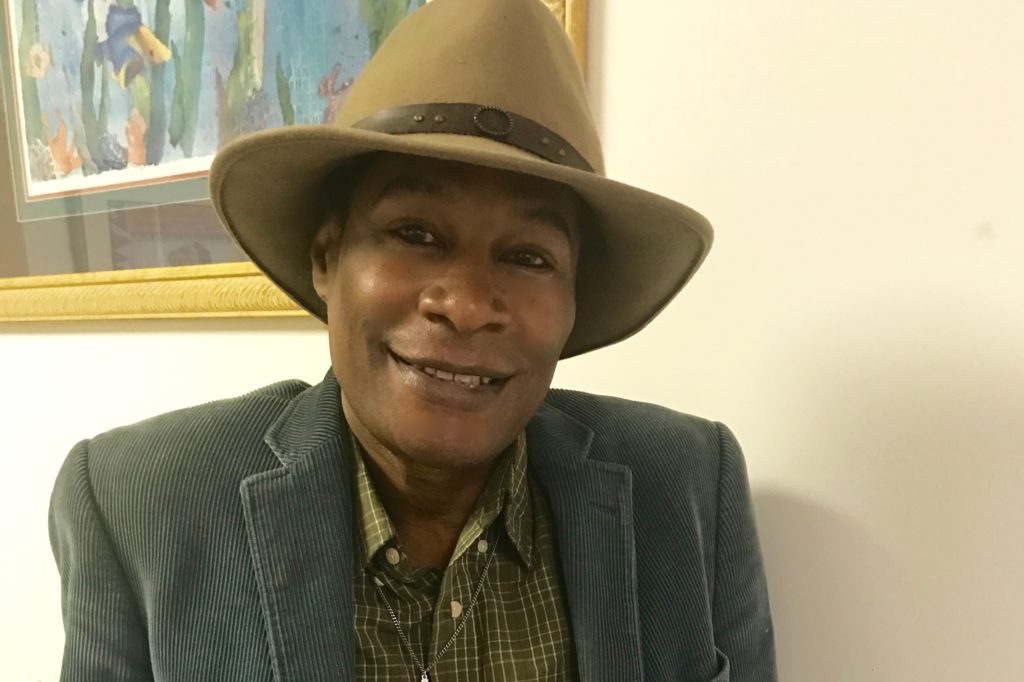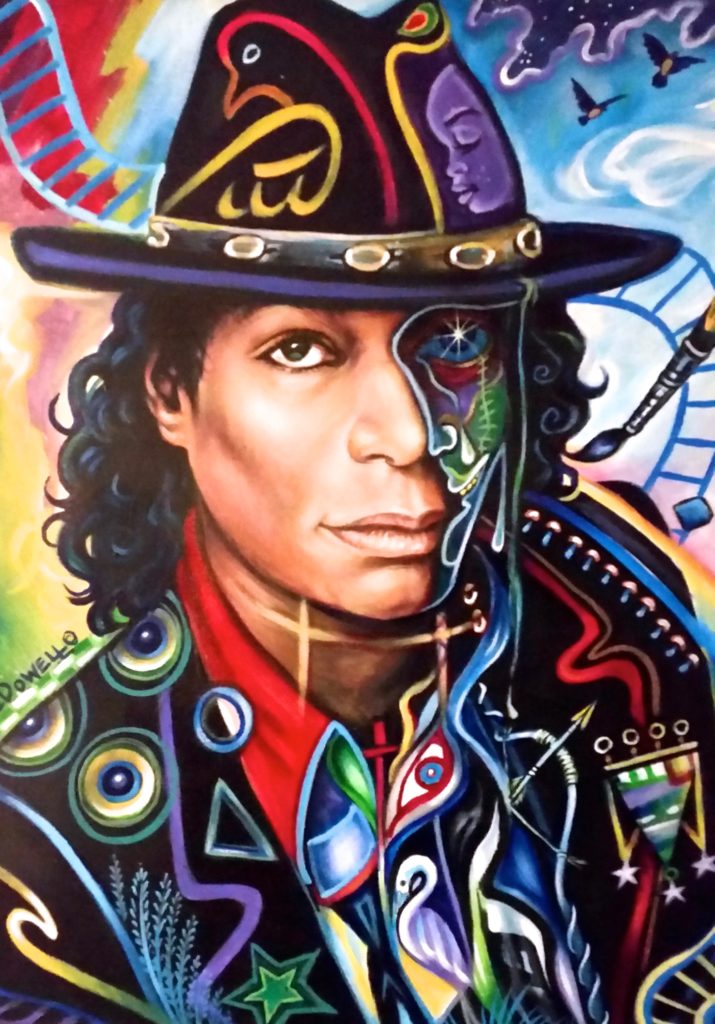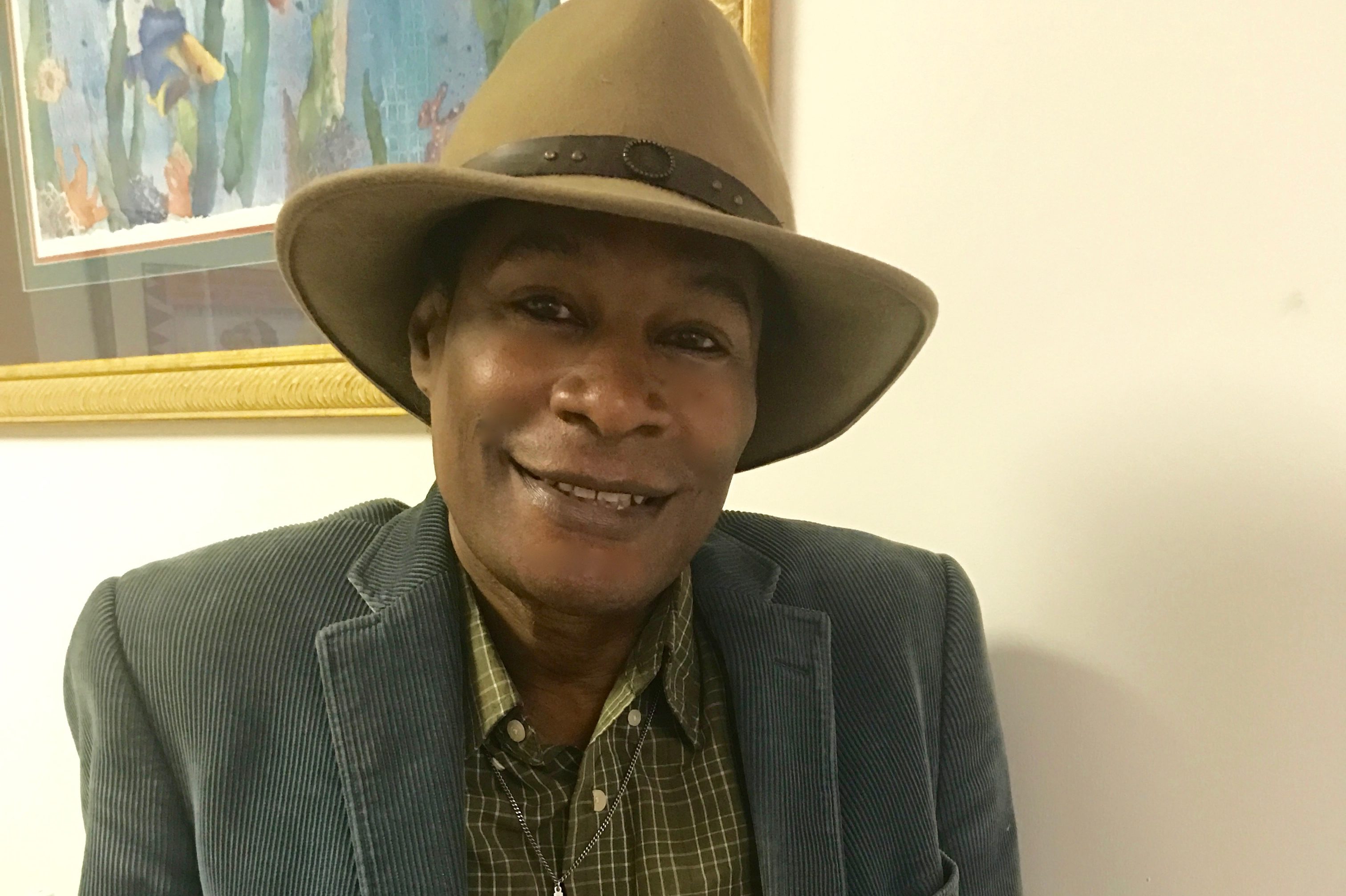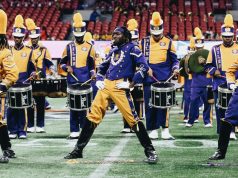By Ariel Worthy
The Birmingham Times

Ronald McDowell is a self-taught artist whose exhibitions have appeared at the New York World Festival, the Martin Luther King Center in Atlanta, the Essence Festival in New Orleans and the Ebony Museum in Oakland, California.
His work can also be found in Birmingham and includes the Temptations statues on Fourth Avenue and sculptures in Kelly Ingram Park.
And it all began before he turned one.
“I remember winning an art contest in kindergarten,” he said. “But my mother told me that I started at 11 months. She bought a high chair for me and on one side it was a table for me to eat and you could flip it over and it would become flat and I could store crayons in there, and I began to draw.”
Tuskegee
McDowell, who’s over 50, is currently an art professor at Tuskegee University and lives in Tuskegee. He began working at the university in 2015 after college President Dr. Brian Johnson wanted to add art to the Science, Technology, Engineering and Math (STEM) program.
“[Dr. Johnson] approached me and said ‘I know exactly who you are,’ and he said ‘I want to add the A to STEM, and make it STEAM . . . this is the first time we’re going to focus on art. Now we have an art and science department.”
McDowell said he’s never had an art class in his life. “I didn’t study art,” he said. “By the time I got to an art class I was far beyond learning art colors, and shaping. I taught myself to do everything.”
Creative Family
McDowell remembers his parents being creative, although they had blue collar jobs. “My mother could cook, she could do hair, she was just gifted. She had nine kids and she was creative with how she did things. My father worked at a mill but he could draw,” McDowell said.
McDowell was the fourth child, and being in the middle he didn’t get the attention like the older and younger siblings, he said.
“I didn’t think I mattered; I contemplated suicide when I was 10,” McDowell said. “But my father kept instilling who God is and our purpose in life.”
For McDowell, his purpose was art. Learning from his older brother, Lonnie, McDowell learned how to create different types of art.
“When you’re young you don’t pay attention to it but everything is tight.” McDowell said. “My older brother Lonnie would teach me a lot of about art. We did a lot of papier- mâché to create many three-dimensional pieces. We made our own scooter out of roller skates and a board. We were so athletic and creative.”
McDowell remembers being interested in the art his parents created.
“In the front pages of the Bible where they were blank, my father would draw different pictures, and I remember being fascinated that a white piece of paper now had a work of art on it; it was like magic.”
Unlike the rest of his family, McDowell said he didn’t have a natural ability for art, but he had a passion.
“My brothers still do art from time to time, but it’s not their passion,” McDowell said. “Some people can sing but can never have a record, but people with half the talent can get a deal. It was the same way with me. My brothers had the real talent, but I had the passion to do this.”

Alabama Visit
Originally from Pittsburgh, California, McDowell came to Alabama for the first time in June 1986 to visit his dad’s side of the family.
“I had on tennis shoes, Levi’s and when I got here, and I walked into this humid weather it was like I had walked into an oven. I had a whole bunch of hair and I was just sweating,” he said. “I didn’t see how people in the country were just playing outside in this weather. I didn’t see how people could survive in this. It wasn’t tropical, and it wasn’t the dry air we have on the coast in California. It really surprised me.”
What made him stay was the family-like atmosphere.
“I discovered that the people here were so together as black people,” McDowell said. “In California the black people tried to bond together but because of all of the nationalities in the neighborhoods – black, white, Jews, Hispanic, Irish, Italians, Cubans – we never really looked at black history as much as they do here in the South.”
Mayor Arrington
McDowell lived in the South creating art and working for people all over the world, as far as Nigeria, before meeting then Birmingham Mayor Richard Arrington.
“When I finally got to meet him I was nervous,” McDowell said. “He asked me to design a coin for a Citizen of Birmingham, that he wanted to give out, and I designed it in front of him while he was watching me . . . and that’s how everything started.”
McDowell would go on to create statues of the Foot Soldiers and the Temptations statues as well as a mural, A New Day in Old Birmingham at the Birmingham Public Library in downtown.
“Birmingham is like a melting pot of cultures and ideas,” he said. “And I wanted to capture that the best way possible.”
Honoring Dr. King
McDowell has been commissioned to bring the first Martin Luther King Jr. statue to Montgomery. He was asked by civil rights legend Evelyn Lowery to create the work.
“She commissioned me to do it. She did a lot of events in Selma and she couldn’t find any three-dimensional artists and she saw my work,” McDowell said. “I did the Rosa Parks statue in front of Alabama State University, and the Coretta Scott King statue in Marion, Alabama. My third was the statue of Martin Luther King, but [Lowery] died in the midst of creating the statue, and the city decided they would support it and fund it.”
This statue will show King in a robe, instead of a suit, like most statues of him, McDowell said.
“It was my idea to put him in a robe because it was God’s plan to lead him to a spiritual journey.” He said. “I wanted to take them back to when he was a young minister before he became the leader of the movement. Ministering was his first calling.”
“Finally, they are getting one,” he said, of the city of Montgomery. “We’re going to unveil it on his birthday in 2018.”




